Building a Smart Charging Logic for Electric Vehicles with Loxone
Written on
Chapter 1: Introduction to Intelligent Car Charging
Creating a personalized car charging logic that aligns with your mobility habits can be achieved with relative ease.
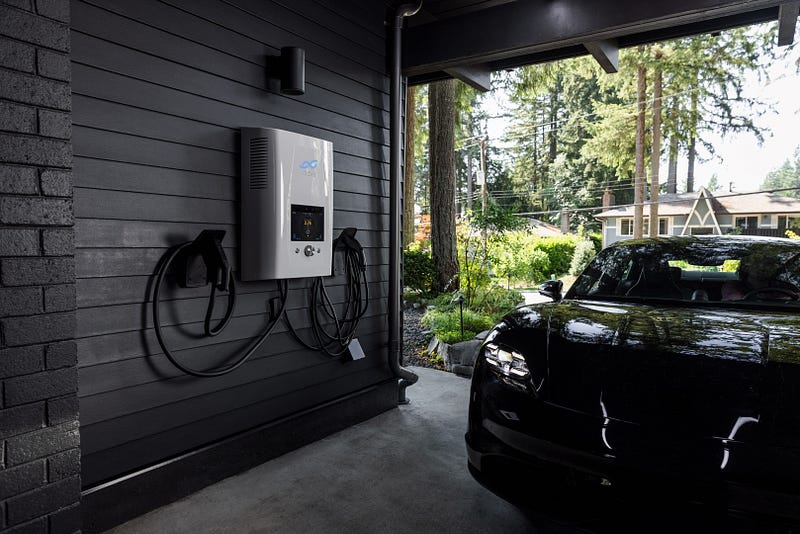
Photo by dcbel on Unsplash
With the rising costs of energy and the looming threat of energy shortages this winter, you might wonder: are electric vehicles (EVs) still a viable option? The answer is a resounding yes, provided you can charge your EV using renewable energy—preferably sourced from your own home or workplace.
You might think that sounds simple, but there are challenges. Your vehicle must be parked and plugged in during daylight hours, and since solar energy fluctuates due to weather conditions and time of day, managing your car's charging can be quite labor-intensive.
The good news is that a solution exists: a building control system. In this article, I will guide you through the intelligent charging logic I developed using Loxone. This system is not only user-friendly but also versatile enough to accommodate various functionalities.
Before we proceed, I want to clarify that I have a background in electrical engineering, so expect some technical details ahead.
Section 1.1: What is Loxone?
Loxone is an economical and readily available building control system. Its main advantage lies in its modular structure, featuring a miniserver that can be directly installed in your home. You can configure and upload logic directly to this miniserver, and it supports a broad array of building automation components, from EV charging stations to lighting solutions and media servers.
However, the configuration process can be somewhat awkward and prone to errors. Despite this drawback, given that configuration is a one-time task and the benefits of Loxone are ongoing, I find the trade-off acceptable.
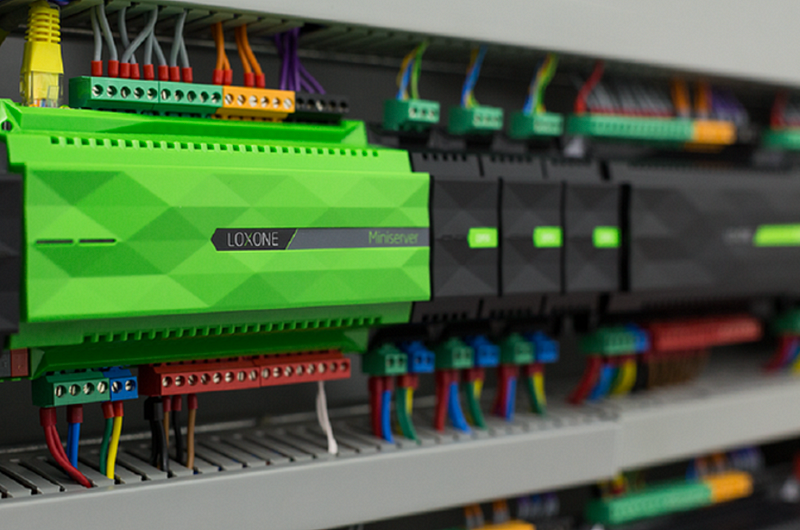
Chapter 2: Setting Up the System
My home’s overall energy configuration is detailed in a separate article:
Solar Self-Sufficiency Is Feasible, Even in Moderate Climates
This setup also applies to the foundational aspects of charging patterns, particularly during the dark winter months:
Solar Self-Sufficiency: Optimizing Winter Car Charging Patterns for Geopolitics
For my Loxone car charging system, I utilized the following components:
- Loxone miniserver (2017 model)
- Keba KeConnect p20 charging station (2017 model)
- Keba KeConnect p30 charging station (2019 model)
All components are interconnected via wired Ethernet, ensuring stable connectivity and minimal latency.
This first video, "Building a Smart Home Control Panel - Featuring Loxone," explores the integration of Loxone in smart home setups, including car charging logic.
Section 2.1: The Charging Logic
Now we delve into the exciting part: detailing my Loxone charging logic.
Charging Mode
To begin, the logic differentiates between summer and winter modes:
- Summer Mode: From February 15 to October 31, charge whichever connected car is available during periods of at least 3.5kW surplus solar energy.
- Winter Mode: From November 1 to February 14, charge all connected vehicles from 10 AM to 3 PM, when solar energy production is at its peak, utilizing a maximum charging power of 12kW.
Over time, I have fine-tuned both summer and winter modes to suit our needs and adapt to geopolitical changes.


Charging Station Selector
Since we own two electric vehicles and cannot charge both simultaneously at 12kW due to our solar system's limitations, a selector prioritizes charging:
My wife's car gets charging priority, as she relies on it for her daily commute, while I use public transport. My vehicle will only charge once my wife's is fully charged or disconnected. If my car is charging and my wife's connects, my charging will pause to allow hers to resume.
Charging priorities can be manually overridden through the Loxone app.
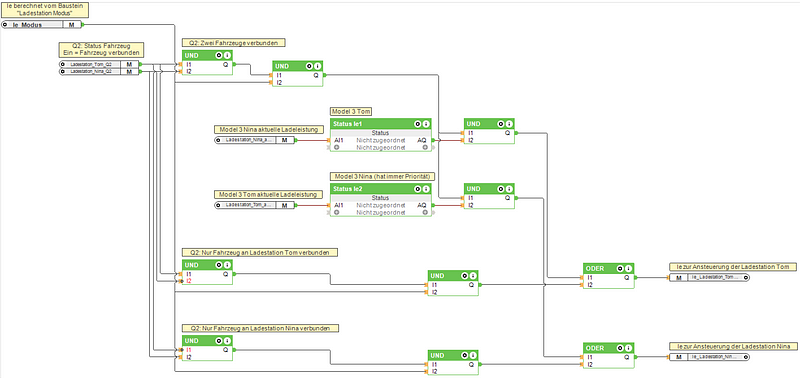
Charging Current
To optimize self-sufficiency and minimize energy costs, regulating the charging current is central to my logic. It considers available surplus solar energy and the state of the house battery, even managing short periods of cloud cover.
The charging current is adjusted using a straightforward feedback loop, comparing the charging current to the available surplus solar power.
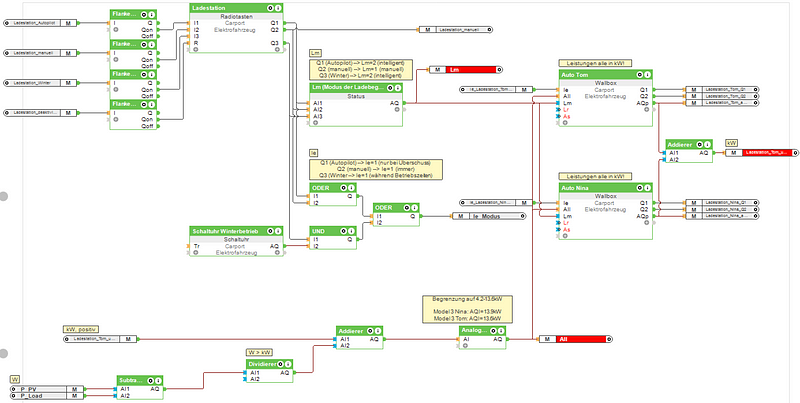
Flexibility
The logic I described reflects our specific mobility patterns and does not serve as a one-size-fits-all solution. Nonetheless, Loxone offers various features that allow for customization to meet individual needs. I utilized triggers and timers to ensure the charging logic operates seamlessly without manual intervention.
Limitations
As noted earlier, the Loxone configuration software can be cumbersome. Here are some key limitations to keep in mind:
- Inconsistency in units: Some components are measured in watts, while others use kilowatts, which can be confusing.
- Testing a charging logic reliant on variable solar energy is challenging, as there's no way to simulate time series for individual parameters.
- My charging stations are limited to 3-phase charging; modern units can alternate between 1-phase and 3-phase, which would enhance winter self-sufficiency significantly.
The second video, "Retrofitting & Renovating with Loxone Air I 2024 [4k]," showcases innovative ways to integrate Loxone systems into existing setups, enhancing energy efficiency.
Chapter 3: Results of the Charging Logic
Using the above charging logic, here are some typical patterns observed during summer mode:
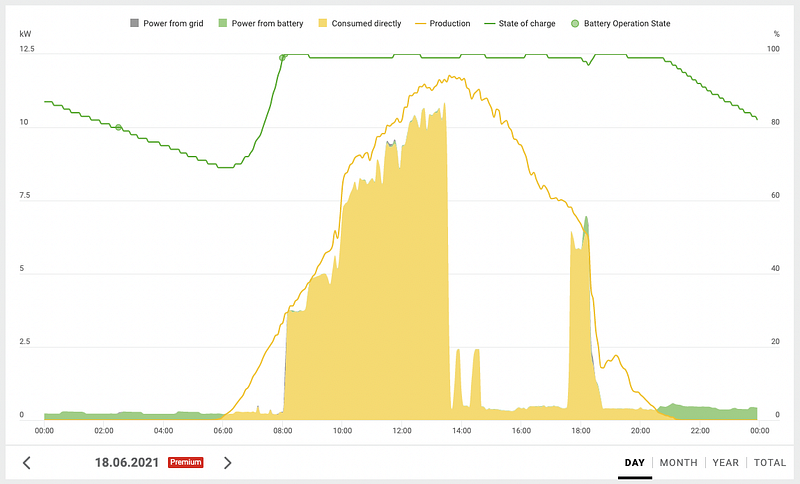
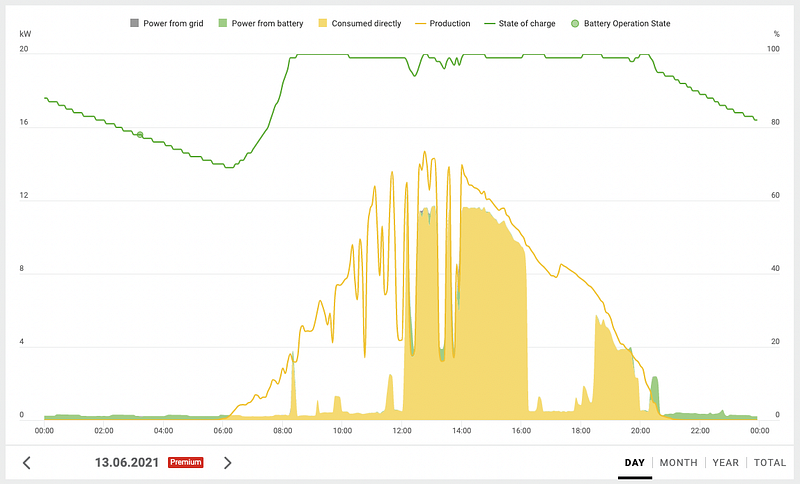
Here are some patterns for winter mode charging:
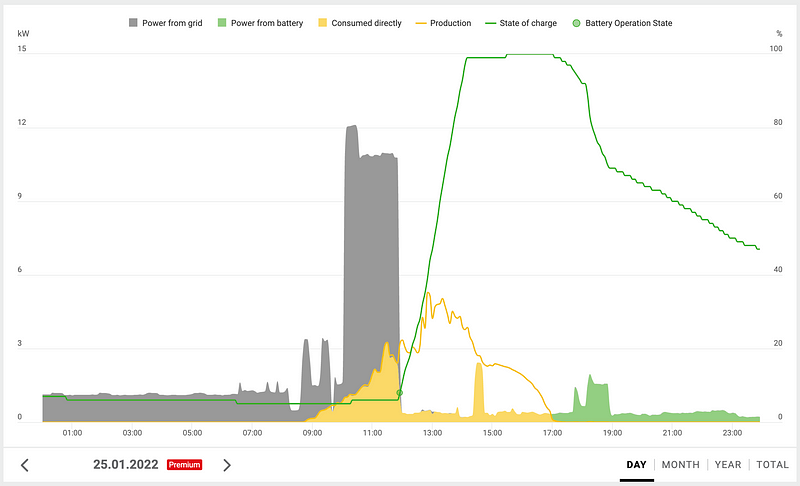
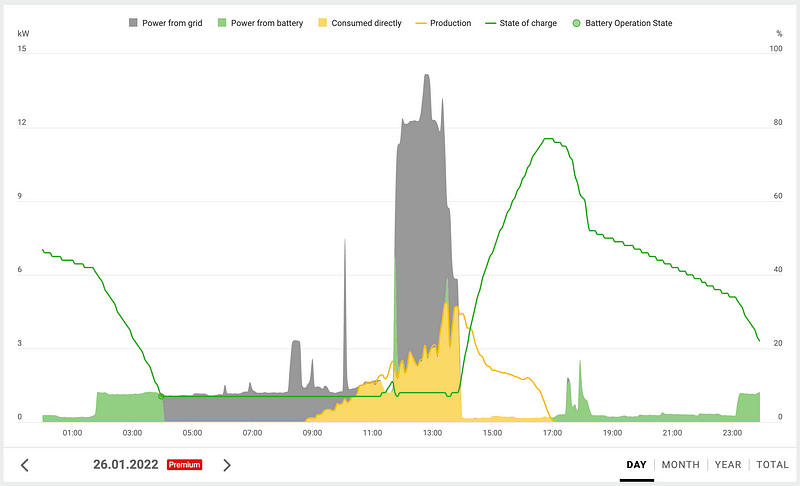
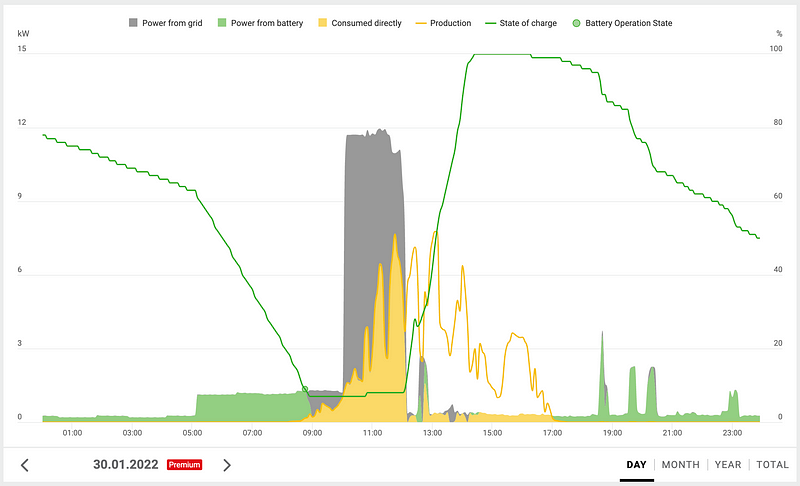
Conclusion
With the capability to control your electric vehicles' charging logic, you gain advantages in both financial savings and energy independence. However, solutions must be tailored to individual circumstances, as mobility patterns and personal needs differ widely.
If you're interested in using my logic as a foundation for your own solution, feel free to leave your email in the comments, and I can share the Loxone configuration file with you.
As a tech entrepreneur, active reserve officer, and father of three, I provide practical advice on entrepreneurship and resilience in all aspects of life. My insights are straightforward and focused, perfect for busy entrepreneurs.
When I'm not working, I find inspiration in the stunning mountains surrounding Zermatt. Join over 100 subscribers to receive my weekly newsletter for resilient entrepreneurs every Friday afternoon! Get my eBook on how to ensure your home remains illuminated and efficient!